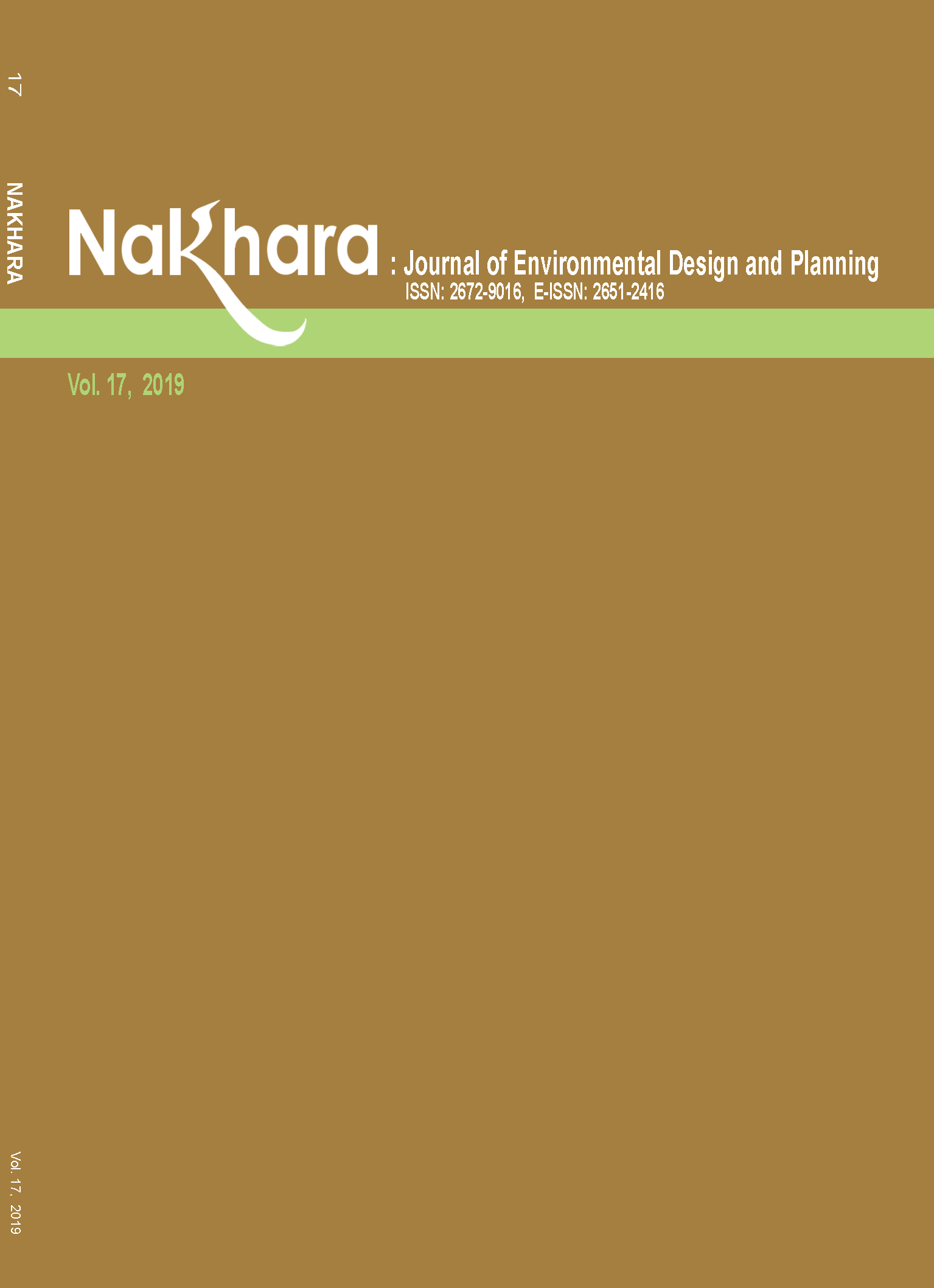Traditional Design in an Ancient Village of Tanintharyi
Main Article Content
Abstract
The ancient village of Thagara is located circa ten kilometres north of Dawei, Tanintharyi Region of Lower Myanmar. While Thagara’s archaeology and the domestic religious architecture such as the pagodas and monasteries have been well documented, this article is the first to classify the main elements of the domestic dwellings. Five key components of the vernacular architecture are identified: the style of the house facade, the building materials, the hearth, the rice barn and the shrine. Constructed with local materials, the facades and roofs were designed to meet the challenges of the monsoonal climate and the hearth and rice barn adapted to the preferences of individual house dwellers and rice yields. The Buddhist and animistic shrines reflect the importance of spiritual activities in the traditional way of life. Using data from a systematic survey, the variations are defined in this article to illustrate aspects of the social, economic and religious daily life in the villages of Lower Myanmar
Article Details

This work is licensed under a Creative Commons Attribution-NonCommercial-NoDerivatives 4.0 International License.
References
Aye, S. W. (1974). Dawei chronicle history (Daw-weh-yaza-win-thamaing). Dawei: Gyi-pwa-ye-sa-oat-taik.
Chutiwong, C. (2011). The architecture of Mon Buddhist monasteries in lower Burma. Bangkok: E. T. Publishing.
Fraser-Lu, S. (2001). Splendor in wood: monasteries of Burma. Bangkok: Silkworm.
Kyaing, W. (2004). Study of Finds from Paw Taw Hmu Hpaya Mound Excavations. (Magwe Taing, Pakokku Khayaing, Yesagyo Myo Neh, Sint Kaing Kye Ywa Oat Su, Nwa Htein Ywa Paw Taw Muu Hpaya Kon Pat Wan Kyin Tuu Paw Let La Twe. Shi Hmu Asi yin kansa (Excavation and Survey of Nwa Htein Pagoda, Pakhangyi and Survey of the Surrounding Area. (Unpublished Report) Department of Archaeology, Ministry of Culture.
Lim, R. M. (2006). Drukpa and Burman: Vernacular architecture. In R., Zetter, & G., Watson (Eds.), Designing sustainable cities in the developing world (pp. 21-51). Hampshire: Ashgate.
Min, K. (1968). Dawei culture (hta-weh yin-kye-hmu-ah-my-teh). Rangoon: Aye Aye Publishers.
Moore, E. and Thainkha, S. (2019b). The significance of Dawei in the East-West Cultural Corridor. In M. Shibayama (Ed.) Redefining east-west cultural connectivity in Mainland Southeast Asian history. Bangkok: Geoinformatics International, pp. 149-164.
Moore, E. (1996). Monasteries of Mandalay. SPAFA Journal, 6( 3), 4-34. Retrieved from https://www.spafajournal.org/index.php/spafa1991journal/article/download/276/270
Moore, E. (2020). Wider Bagan: the Buddhist landscape beyond the capital in the 11th to 13th century. Singapore: ISEAS Press, ISEAS Yusof Ishak Institute.
Moore, E. and Thainkha, S. (2019a). The ancient city of Mokti in the tenth to thirteenth centuary CE Bagan period. Sojourn: Journal of Social Issues in Southeast Asia, 34(1), 149-184.
Murphy, J. D. (1995). The future of Asia’s past: an international conference on the preservation of Asia’s architectural heritage, Chiang Mai, Thailand. January 11-14, 1995. International Journal of Cultural Property, 3, 2, 369-376.
Myanmar Information Management Unit. (2019). Myanmar administrative map. Retrieved from https://themimu.info/sites/themimu.info/files/documents/
Country_Map_Administrative_MIMU539v17_ 11Feb2019_ 6ft -3ft.pdf
Myintzu, W. (2011). Dawei dialect and figures of speech through selected Dawei folk songs. Masters Dissertation, Department of English, Dawei University.
Panin, O. (2002). Thai-Mon vernacular architecture. Silpakorn University International Journal, 2(1), 27-46.
Ratana (Dawei) (Bhadanta-ida-bha-tha) (2007/2008) Collected Notes on Dawei (Dawei-ye-ya-hmat-tan-padetha) Vol. 1 and 2. Bahan. Yangon: U Maung Maung Hla.
Sandi, A. (1999). Social organisation of Dawei nationals, Dawei Township, Tanintharyi Division. Yangon. MA dissertation, Department of Anthropology, University of Yangon.
Than Swe. (1996/2004). Nine pagodas of Dawei (Shit-koe-shin Tha-maing-win Dawei Hpaya-mya Ah-thein). Yangon: Ah-they Ah-waing Sabeh.
Waterson, R. (1990). The living house. Singapore: Oxford University Press.
Zetter, R. & Georgia, W. (2006). Designing sustainable cities in the developing world. Hampshire: Ashgate.

